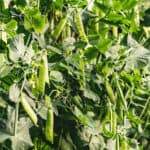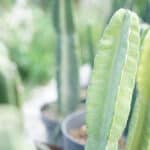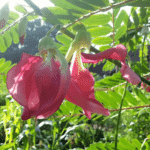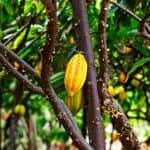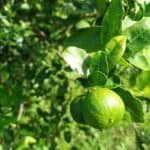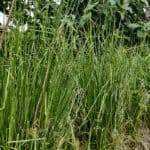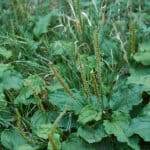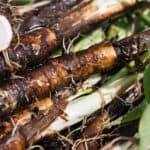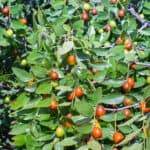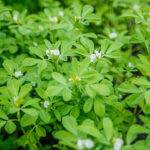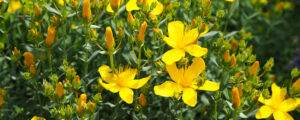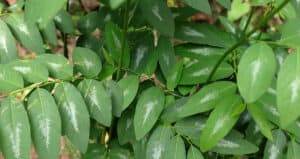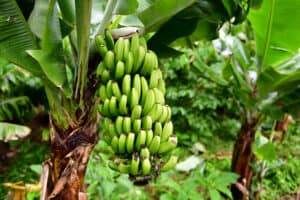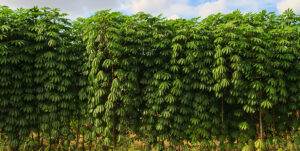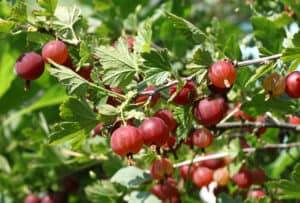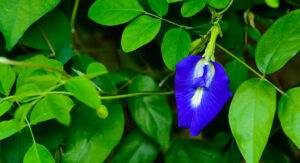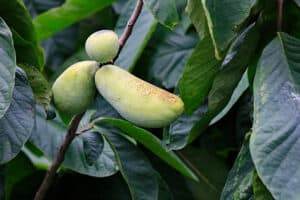Soursop Overview
Soursop (Annona muricata), also called guanabana or Graviola, is a fruit in the Annonaceae, or custard apple, family. The fruit is somewhat irregular in shape, resembling an enlarged, upside-down avocado—assuming we are comparing fruits in reference to how each hangs from its respective tree.
Soursop skin is thick and covered with prickly spines and ranges from bright green to pale yellow-green in color. The flesh is off-white and often fibrous, with a creamy, custard-like texture. The fruit is laden with almond-sized brown or black seeds (anywhere from 30-200 per fruit), each in its own “pocket” of flesh.
Soursop tastes like the ultimate combination of pineapple and mango. Because of its sweet reputation, it is frequently used to make treats like ice cream, custards, smoothies, and drinks. When perfectly ripe, soursop scooped right out of the skin with a spoon will satiate any desire for a delectable treat.
The Soursop Tree
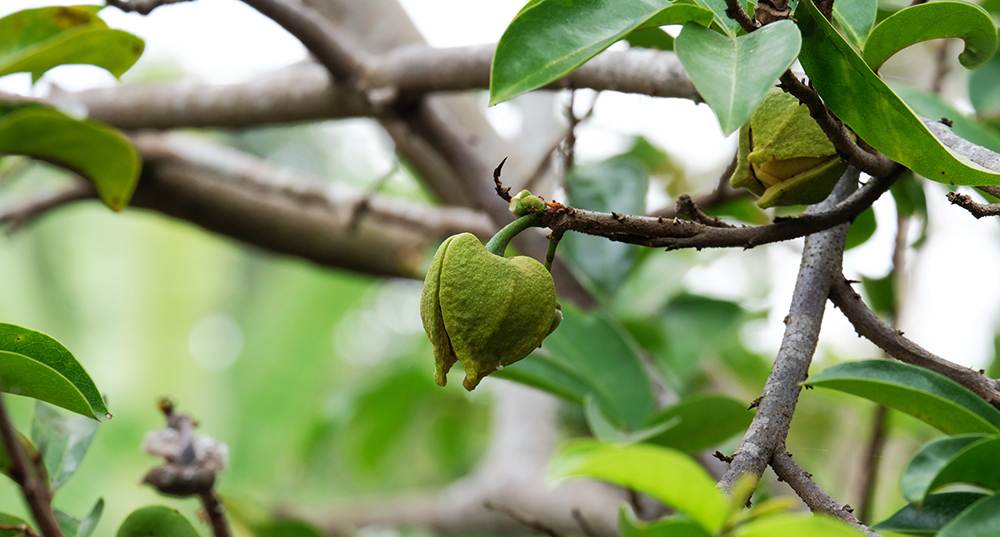
Soursop trees are perennial and evergreen, and their flowers consist of six thick, triangular petals. The three petals that make up the outside “layer” of the flower are greenish-yellow and tend to be a bit thicker and fleshier than the internal petals. The three petals composing the inside “layer” are pale yellow and stay mostly closed, even when the flower is considered bloomed. The innermost part of the flower resembles a pale yellow nub and is perhaps comparable to a squashed acorn in shape. Flowers may bloom at the tip of a shoot, on a branch, or straight on the trunk of the tree itself.
Origins of Soursop
Soursop is native to the tropical regions of Central and South America, including Mexico, Brazil, Cuba, Peru, and Venezuela. Today, it is cultivated in several tropical areas, such as Southeast Asia, northern Africa, and the Pacific Islands. Soursop trees will not survive anywhere in the contiguous U.S., aside from southern Florida, where they have been cultivated with intermittent success for about a century.
Medicinal Properties of Soursop

Soursop contains high levels of vitamin C and other antioxidants and may be helpful in maintaining a healthy immune system. Parts of the soursop plant, including the leaves, fruit, seeds, bark, and roots, are said to have pharmacological properties and are commonly used in traditional medicine.
It has been reported that its medicinal properties include—to varying degrees—anticancer, antiulcer, antidiabetic, antiprotozoal, antidiarrheal, antibacterial, antiviral, antihypertensive, and wound healing properties (Mutakin, et al., 2022). It should be noted that these treatments have not been tested by the FDA, and you should do additional research prior to utilizing soursop to treat any illnesses.
Planting Soursop Seeds
Most find that planting from seed is the most effective method of cultivating soursop trees. Assuming an adequately humid environment, seeds should be planted in nutrient-dense, well-drained soil with a pH of 6.1 to 6.5, if possible. Seeds should be extracted from the fruit, washed with water, dried, and planted immediately. The sowing depth should be 1 cm, with 2 to 2.5 cm between seeds. Germination can be expected after 25 to 30 days, and seedlings should be potted (or repotted) after the first set of leaves is mature. The young trees should be ready to transplant in six to seven months.
To prepare to transplant your young soursop trees, dig holes 50 cm deep and 50 cm wide, with five to seven meters between each hole (or 5 to 7 meters from the nearest structure). Plant your trees, cover the roots with native soil, and water immediately. It is recommended to mix soil with well-decomposed compost prior to planting.
Caring for Soursop Trees
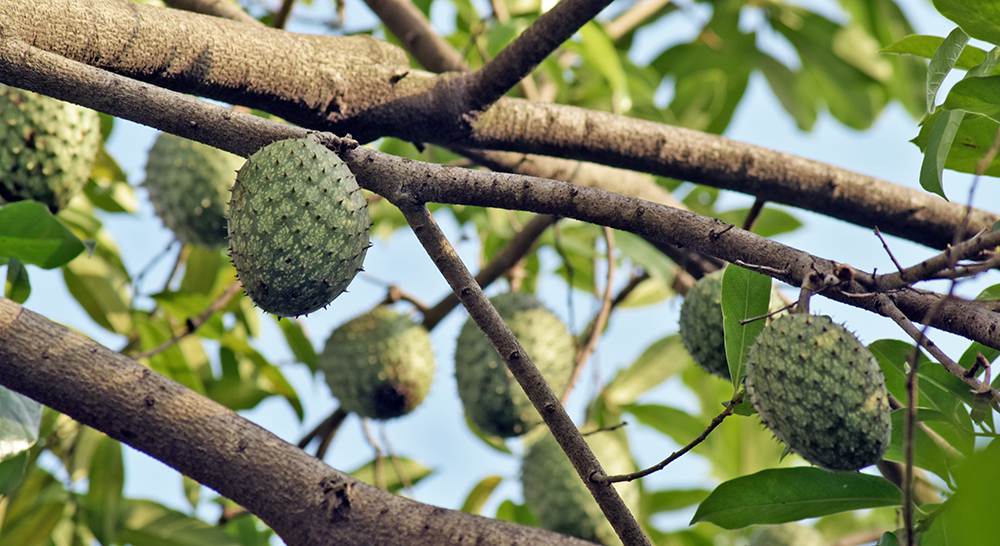
Soursop trees require humid tropical environments; they are unable to tolerate any measure of frost. They prefer partial shade, with about six hours of sunlight per day. They require no water during the rainy season and should be watered a few times per week during the dry season, although they are known to be somewhat resistant to drought.
While the trees do not require fertilizer early on, it may increase the rate of growth of the trees and lead to higher-quality fruit yields. An application of well-aged compost or organic fertilizer is recommended a few times per year.
Soursop trees are susceptible to fungal infections, including root rot, anthracnose, and pink disease. Root rot can be avoided by ensuring adequate drainage and not overwatering. Anthracnose and pink disease can be combated by removing any infected leaves or branches.
Fruit flies are common pests contributing to the loss of fruits. One method of preventing fruit fly access to your soursops is bagging the fruits.
Harvesting Soursop (Finally!)
You can expect your soursop trees to begin producing fruit three to five years after planting. Your tree may produce fruit one to three times per year (!!!), although yields for soursop trees tend to be low.
Soursop should be harvested when the fruit is fully developed, the skin is yellow-green in color, and it has lost its shine. The spines will have softened slightly, but the fruit itself should not be allowed to soften on the tree. Once picked, the fruits will ripen at room temperature within a few days, and should be stored in the refrigerator once ripe if not consumed.
A Taste of Soursop
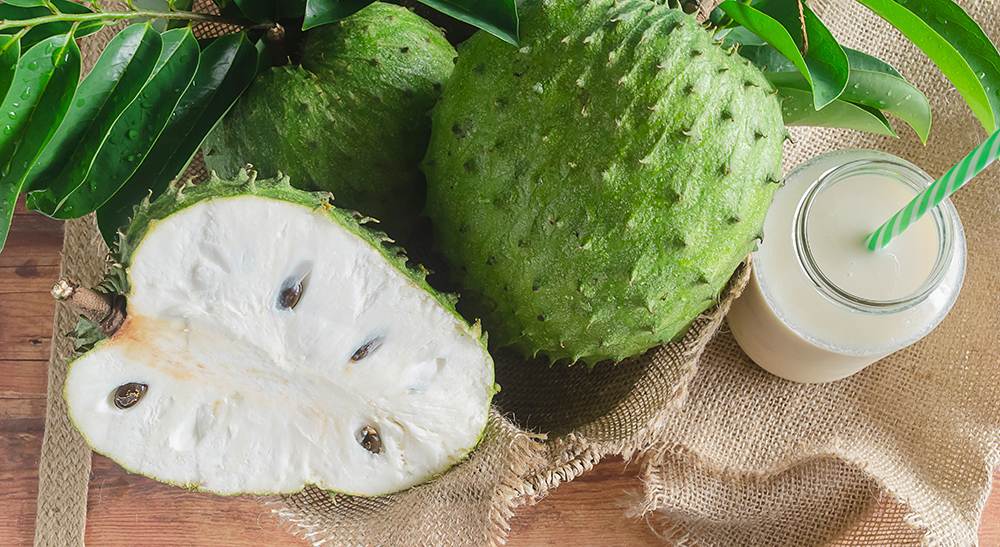
To eat a soursop raw—which is perfectly acceptable and delicious—cut it in half, and scoop out the flesh with a spoon. Be sure to work around or spit out any seeds, as they are known to be somewhat toxic if consumed without processing. Alternatively, you can remove the skin and bite into it like an apple (still avoiding seeds) or cut it into apple-like slices and enjoy the flesh straight off the skin.
Soursop has rightfully earned its reputation as a dessert-y fruit. Its sweet, creamy texture lends itself well to the likes of ice cream, smoothies, mousse, and custard. Freeze it, and blend it into a smoothie, or combine it fresh with cream (i.e. heavy cream or coconut cream), a sweetener (i.e. maple syrup or sweetened condensed milk), and any other tropical fruits you fancy to freeze into ice cream.
Citation:
Mutakin M, Fauziati R, Fadhilah FN, Zuhrotun A, Amalia R, Hadisaputri YE. Pharmacological Activities of Soursop (Annona muricata Lin.). Molecules. 2022 Feb 10;27(4):1201. doi: 10.3390/molecules27041201. PMID: 35208993; PMCID: PMC8878098.


